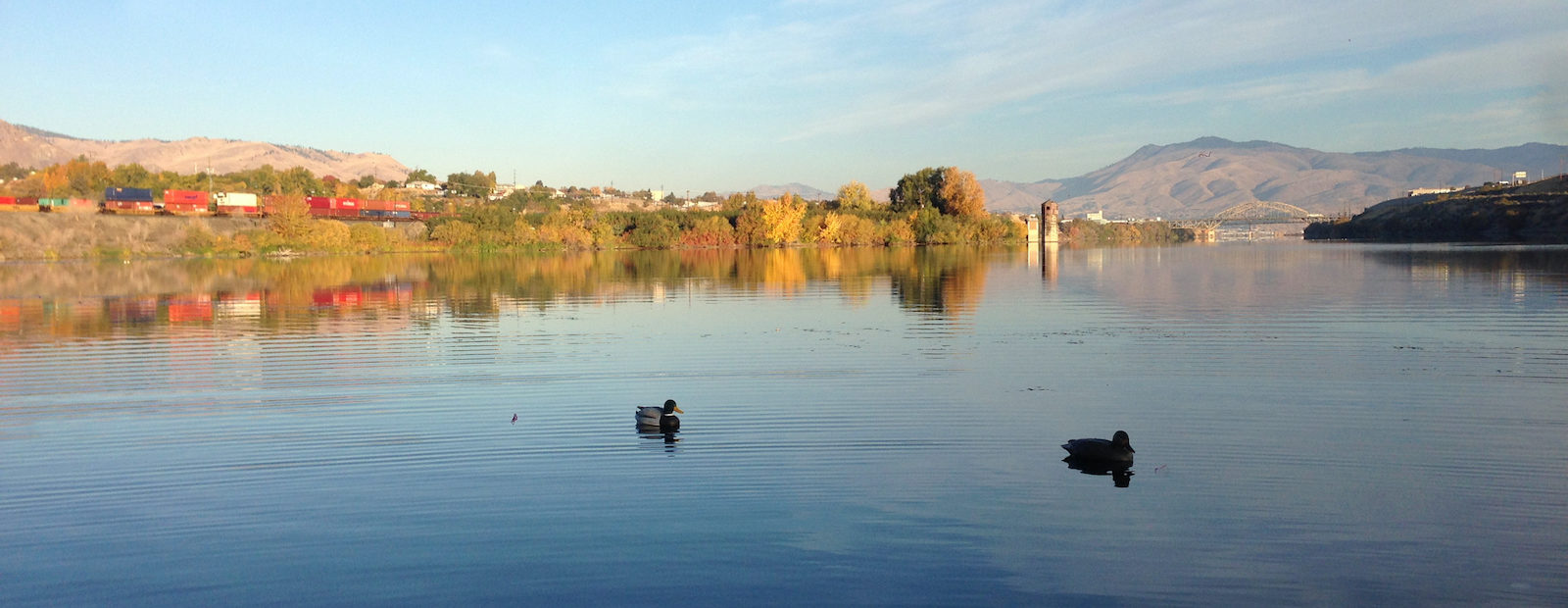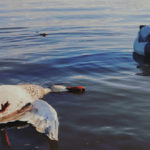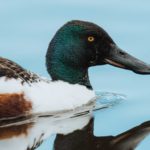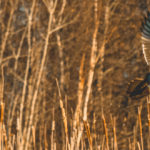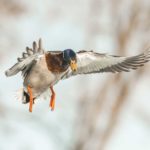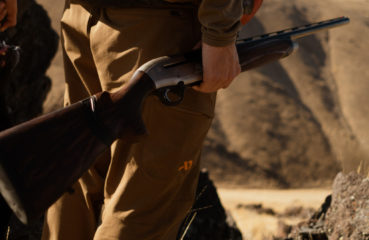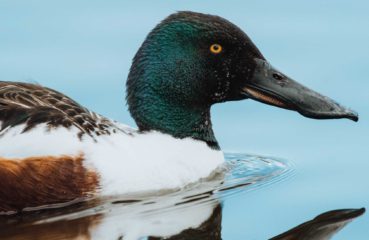The mighty Columbia River provides transportation, irrigation, electricity, and excellent waterfowl hunting opportunities to those willing to learn her secrets.
For an instant, I don’t believe my eyes. A lone drake, flying low and slow up the edge of the river, interrupts the morning stillness. I notice him the same time he sees the spread, sets his wings, and leans back into an easy downhill glide. It is mesmerizing to watch a bird commit so casually – carelessly, almost – to a trap set with so much forethought and intention. Then the muscle memory takes over. Eyes narrow to focus on the target, hands grip and shoulder the stock, cheek presses into the comb, and the barrel swings onto the bird. Startled wings beat and bank up to climb, but my trigger finger is faster. In a broad arc, he tumbles to the water below.
I have seen mallards seemingly dead suddenly return to full strength and shrug off the devastation of No. 3 shot to swim, dive, and disappear. Without a dog to collect him, I keep the gun mounted, the barrel trained on his orange feet and wild wings, ready with a second volley should he make a move for deeper water. Then he relaxes and goes still, and I wade out to claim him from the Columbia River, flowing slowly over this gravelly point just downstream of Wenatchee, in the middle of Washington state.
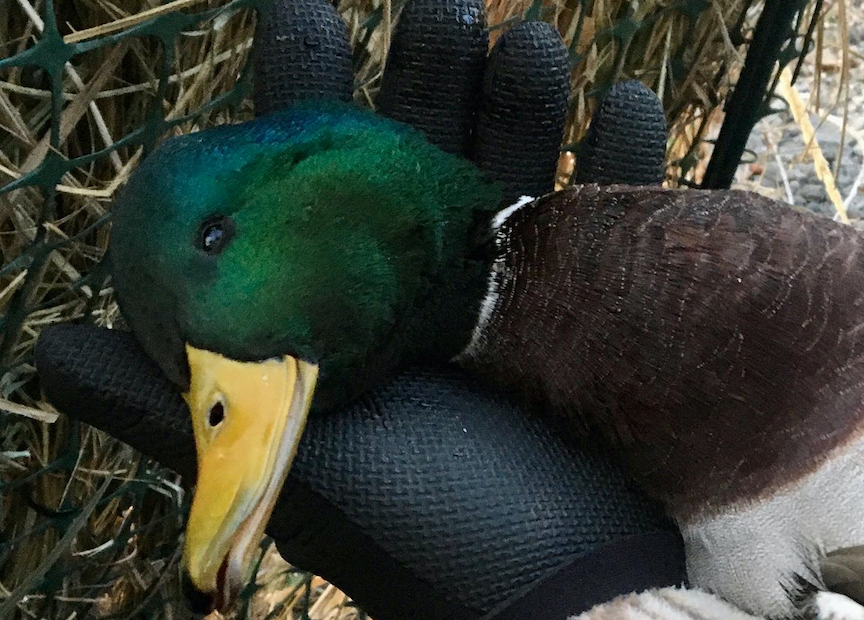
Duck hunting the mighty Columbia
Here on the edge of town, the Columbia is not quick to give up her birds. Habitat is plentiful and the river’s countless alcoves and sandy bars offer an endless number of places to rest, dabble, and preen. Hydropower operations upstream at Rocky Reach and downstream at Rock Island constantly shift the waterline up and down the bank. Together with the nine other mainstem projects (from Grand Coulee all the way to Bonneville), the Columbia’s run-of-the-river dams are like a series of stairstep cascades. With limited storage capacity, operators generate electricity by directing – but never holding – water on its way to the Pacific. To hunt the river is to anticipate a dynamic range of physical conditions, to say nothing of the nuanced behavior of migratory waterfowl, the influence of weather, or the wildcard of hunting pressure.
During the winter migration, this pitch of the Pacific Flyway grows busy with ducks and geese (look no farther than the baseball fields at Walla Walla Point Park). We see good numbers of Canada geese, wigeon, and mallards. Common goldeneye and buffleheads mix in with big rafts of lesser scaup, ringnecks, and coots. Occasionally, I’ve also noticed canvasbacks, specks, snows, and redheads. Despite the diverse and sometimes heavy traffic, gunning for puddle ducks is largely a game of singles, pairs, and small groups; seldom (if ever) have I seen mallards work the decoys in large flocks. While opportunities might come in small packages, they are satisfying and well earned when they happen.
Like any area with convenient access, hunting the river requires compromise. Anyone that relies on the public option knows that an endless host of variables is likely to change. And however secret your destination, there is always the possibility that someone else knows it too and will beat you there. And that’s fine – may the most ambitious hunter win – but the logistical implications are heavy: if the choicest spot is taken, the sun nearly risen, the birds stirring and ready to fly – where do we go from here?
Making plans within plans to keep your options open
A friend of mine with 20-some-years in the Navy speaks often of having “plans within plans.” He’s referring to mitigating disasters and overcoming the enemy, but the preparedness mindset works just as well for getting in front of greenheads. For me, this strategy means keeping a mental catalog of all the little places the ducks want to be and quickly transitioning between spots as conditions change. For fast setup and breakdown, I use a lean squad of eight decoys and a portable blind dressed in natural vegetation. A kayak serves as both transportation and retriever.
Today, the plans-within-plans strategy paid off. Earlier, at the boat ramp, I noticed the sparkle of headlamps downriver near the area I had been hoping to hunt. Crossing that option off my list and pivoting to Plan B, I pointed the boat upstream and set off for an area that borders the railyard. With massive black-and-orange BNSF locomotives idling on the tracks nearby, there is a shallow gravelly point along the bank that can be hunted at a variety of water levels. The location is unassuming and plain; if not for scouting, you would not label it prime duck habitat, let alone feel compelled to hunt it.

Railroads and flyways
Back in the 1890s, the Great Northern Railroad put Wenatchee on the map by connecting the valley and its apple orchards to a vast transcontinental transportation network. Today, the rails remain a busy freight corridor and also host Amtrak’s Empire Builder between Seattle and Chicago. Anyone that loves watching trains will appreciate the variety of cars that come through town: tank cars for crude oil, hopper cars for coal, multi-colored intermodal stacks, auto racks, and the miscellany of reefers, boxcars, and lumber cars. I particularly enjoy seeing the flatbeds of bright-teal Boeing 737 fuselages, on their way from Wichita to be assembled in Renton.
Back in the present, standing in the river and admiring the heft and bold plumage of this fallen drake, it is easy to appreciate the time and effort that goes into harvesting such a bird. Then, from far downriver, a volley of shots pop in the air: the guys at the Plan-A spot must be having some luck. Back in the blind, I give short tugs on the motion rig and scan the horizon for beating wings, hopeful for the next duck to appear low and slow along the shoreline and interrupt this perfectly wonderful morning.
Last modified: August 6, 2020


